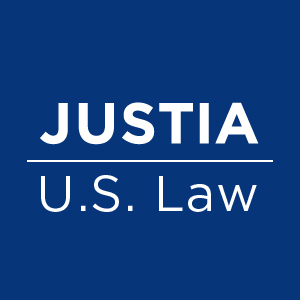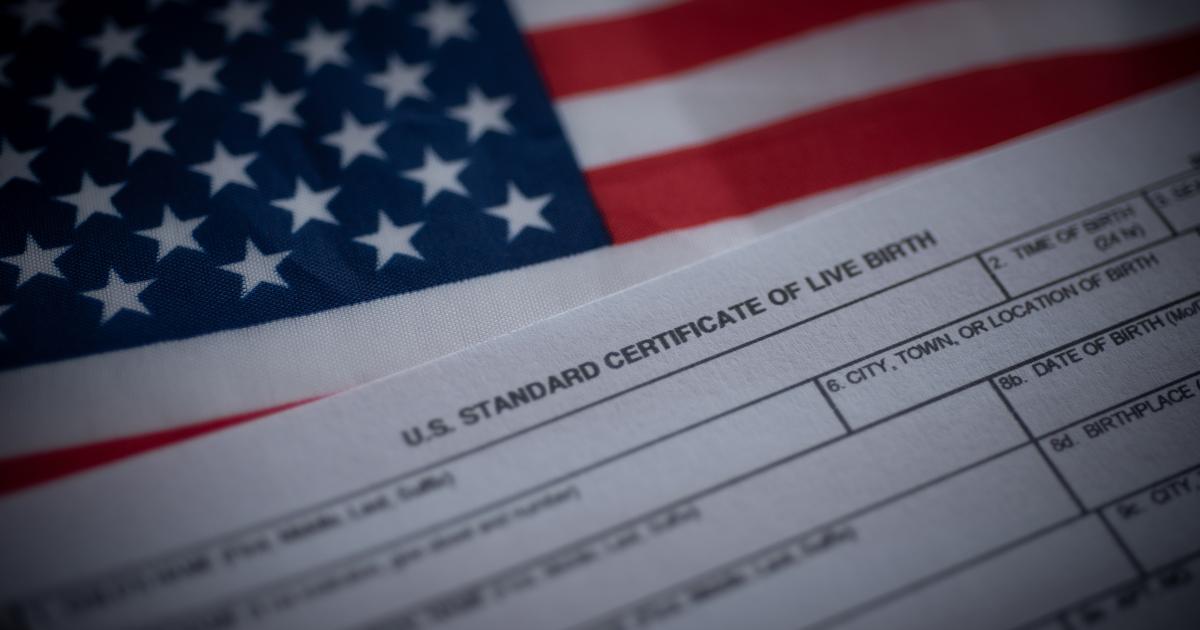Correct. This is why we go by what the original Amendment actually says, and not intent or what "you think they would have thought if things were different back then"! And going by the original text of ALL persons and subject to the jurisdiction there of, a Constitutional Amendment is needed for us to change it in to meaning what Trump's executive order stated it meant in his own mind.
Read this essay by a past Justice Scalia Clerk. His arguments and the Counter arguments...which I tend to agree with...
Michael D. Ramsey is a Professor of Law and Director of International and Comparative Law Programs at the University of San Diego Law School. He clerked for Justice Scalia in 1990-91
READ THE ENTIRE ESSAY, HERE:
Originalism requires extending birthright citizenship to all people born in the United States regardless of the status of their parents.

lawliberty.org
The drafters directly discussed whether Howard’s language appropriately included children of non-citizens. Pennsylvania Senator Cowan objected that the proposed language would include children of Chinese workers on the West Coast. California Senator Conness responded: “The proposition before us relates simply in that respect to the children begotten of Chinese parents in California, and it is proposed to declare that they shall be citizens. … I am in favor of doing so.” No other senator (including Howard) dissented from Conness’ reading. Thus the senators apparently agreed on the clause’s effect, only disagreeing on its wisdom. Similarly, in the House, Ohio Representative Lawrence cited the Lynch case for the proposition that “children born here are citizens without any regard to the political condition or allegiance of their parents.” (After a wave of anti-Chinese sentiment swept the West Coast, Conness lost his seat, and California refused to ratify the Amendment.)
The drafters’ treatment of tribal Native Americans confirms their understanding of “subject to the jurisdiction.” Persons living in tribes were not citizens under antebellum common law, and senators wanted to continue that exclusion. Howard and others assured them that his language did, because US law did not govern intra-tribal offenses—typically due to treaties establishing exclusive tribal authority in such matters. As Howard explained, “an Indian belonging to a tribe” is not “subject to this full and complete jurisdiction” of the United States because that person “is subject for crimes committed against the laws or usages of the tribe to the tribe itself, and not to any foreign or other tribunal.” Senator Williams in support equated tribal members to foreign diplomats, neither being “fully and completely subject to the jurisdiction of the United States.” Senator Trumbull added that because the US government could not “pretend to take jurisdiction of murder and robberies and other crimes committed by one Indian on another,” persons in tribes “are not subject to our jurisdiction.”
This discussion shows that senators understood being subject to US jurisdiction to mean under US sovereign authority with respect to, for example, ordinary crimes—which (to repeat) was the case for everyone in the United States other than diplomats and tribes.
Post-Ratification
After adoption of the Amendment, the executive branch endorsed a broad interpretation of the Amendment. In 1871, Secretary of State Hamilton Fish, confirming the citizenship of US-born children of temporary visitors, wrote: “The Fourteenth Amendment … is simply an affirmance of the common law of England and of this country, so far as it asserts the status of citizenship to be fixed by the place of nativity, irrespective of parentage. The qualification ‘and subject to the jurisdiction thereof’ was probably intended to exclude the children of foreign ministers, and of other persons who may be within our territory with rights of extraterritoriality.” In contrast, Justice Miller’s Supreme Court opinion in the Slaughter-House Cases (1873) in dicta suggested a narrow reading confined to children of citizens (although lower courts that confronted the question directly took a broader reading).
As anti-immigrant feelings surged toward the century’s end, the executive branch switched sides, taking the view that US-born children of Chinese workers were not citizens under the clause.
This led in 1898 to the Supreme Court examining the question directly in United States v. Wong Kim Ark. Relying heavily on the longstanding common law of jus soli and the clause’s drafting history, the Court rejected the Slaughter-House dicta and the (new) executive branch position, instead adopting the view of Secretary Fish: US-born children of non-citizens (except diplomats and others with immunity) were citizens.
The Court described the parents in Wong Kim Ark as lawful permanent residents, so strictly speaking the Court’s decision does not resolve the clause’s application to temporary visitors or persons not lawfully present. But its analysis tracked the argument presented above: subject to jurisdiction meant under sovereign authority, which included everyone born in sovereign territory other than tribes and diplomats.
Counterarguments
The text, history, and application of the citizenship clause confirm that it applies to US-born children of all non-diplomat aliens. Of a few leading objections, I only find one at all persuasive.
First, as noted, Wong Kim Ark addressed the child of lawful permanent residents. Children of temporary visitors and persons unlawfully present are different, one might say, because they (and their parents) lack legal US residence. However, this is not a relevant difference under the text and history of the clause. The textual question is the meaning of “subject to jurisdiction.” There is no sense in which lawful permanent residents are subject to US jurisdiction but temporary visitors or persons lacking lawful status are not. As explained above, all persons, including all non-citizens other than those with immunities, in sovereign territory were under sovereign authority, and thus within the nineteenth-century meaning of “subject to the jurisdiction.” Moreover, neither the pre-war common law, the drafting debates, nor Fish’s post-ratification executive interpretation distinguished between permanent residents and others with respect to citizenship.
Second, one might say that unlike children of citizens, children of aliens are not subject to the “exclusive” jurisdiction of the United States. It is true that children of aliens may also be subject to the jurisdiction of their parent’s home country, as that country might claim them as citizens or subjects. But the clause does not require exclusive jurisdiction—only jurisdiction. Further, the “exclusive jurisdiction” argument would require a different outcome in Wong Kim Ark and run counter to the drafters’ understanding that the Amendment gave citizenship to children of Chinese immigrants.
Third, one might say that the Amendment requires “complete” jurisdiction. It is true that the drafters thought tribal Native Americans were excluded on this ground. But that does not alter the result for the categories at issue in the present debate, because temporary visitors and persons not lawfully present are subject to complete jurisdiction of the United States. They are not equivalent to nineteenth-century tribes, over whose intra-tribal acts the United States claimed no authority.
Finally, an argument that carries some originalist weight arises from intent. The Amendment’s framers likely did not have in mind persons not legally present in the United States (although they did understand the issue of temporary visitors). The United States had no material restrictive immigration laws in 1868. Thus it may be difficult to say that the framers intended to give citizenship to children of persons not lawfully present. And it may be especially difficult to speculate about what the framers would have done, had they considered the question. Thus an originalist concerned with the framers’ intent might hesitate on this issue, perhaps to the point of thinking the matter best left to the political branches.
Modern originalism is, however, predominantly concerned with the text’s original meaning, not the framers’ intent. In this approach, the law is the text that was adopted, not the intent or expectations (or lack thereof) of any drafters or ratifiers. On that understanding of originalism, the test’s original meaning seems clear.
In nineteenth-century language, “subject to the jurisdiction” of a nation meant under that nation’s sovereign authority. The nineteenth-century idea of territorial sovereignty made everyone within sovereign territory subject to sovereign authority, except those with jurisdictional immunities such as diplomats. That reading of the clause conforms to the pre-Amendment common law, which gave US-born children citizenship without regard to their parents’ status. It conforms with the views of the drafters, the immediate post-ratification executive branch, and the Court in Wong Kim Ark, who all read the clause broadly. As a result, the president’s attempt to exclude from citizenship the US-born children of temporary visitors and persons unlawfully present is contrary to the clause’s original meaning.
This essay is based on Professor Ramsey’s article “Originalism and Birthright Citizenship,” which has additional discussion, citations, and authorities





